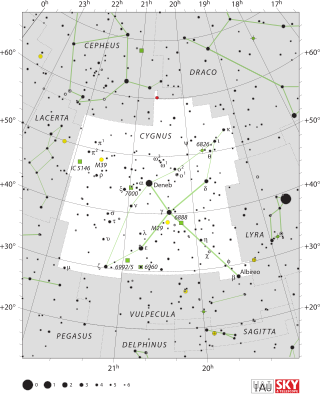
Cygnus is a northern constellation on the plane of the Milky Way, deriving its name from the Latinized Greek word for swan. Cygnus is one of the most recognizable constellations of the northern summer and autumn, and it features a prominent asterism known as the Northern Cross. Cygnus was among the 48 constellations listed by the 2nd century astronomer Ptolemy, and it remains one of the 88 modern constellations.
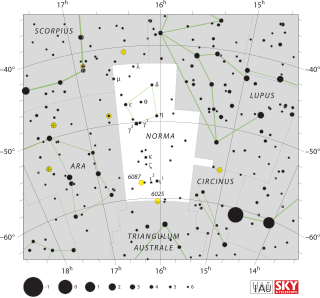
Norma is a small constellation in the Southern Celestial Hemisphere between Ara and Lupus, one of twelve drawn up in the 18th century by French astronomer Nicolas-Louis de Lacaille and one of several depicting scientific instruments. Its name is Latin for normal, referring to a right angle, and is variously considered to represent a rule, a carpenter's square, a set square or a level. It remains one of the 88 modern constellations.

Perseus is a constellation in the northern sky, named after the Greek mythological hero Perseus. It is one of the 48 ancient constellations listed by the 2nd-century astronomer Ptolemy, and among the 88 modern constellations defined by the International Astronomical Union (IAU). It is located near several other constellations named after ancient Greek legends surrounding Perseus, including Andromeda to the west and Cassiopeia to the north. Perseus is also bordered by Aries and Taurus to the south, Auriga to the east, Camelopardalis to the north, and Triangulum to the west. Some star atlases during the early 19th century also depicted Perseus holding the disembodied head of Medusa, whose asterism was named together as Perseus et Caput Medusae; however, this never came into popular usage.

The Jewel Box is an open cluster in the constellation Crux, originally discovered by Nicolas Louis de Lacaille in 1751–1752. This cluster was later named the Jewel Box by John Herschel when he described its telescopic appearance as "...a superb piece of fancy jewellery". It is easily visible to the naked eye as a hazy star some 1.0° southeast of the first-magnitude star Mimosa. This hazy star was given the Bayer star designation "Kappa Crucis", from which the cluster takes one of its common names. The modern designation Kappa Crucis has been assigned to one of the stars in the base of the A-shaped asterism of the cluster
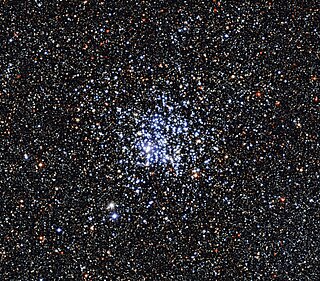
The Wild Duck Cluster is an open cluster of stars in the constellation Scutum. It was discovered by Gottfried Kirch in 1681. Charles Messier included it in his catalogue of diffuse objects in 1764. Its popular name derives from the brighter stars forming a triangle which could resemble a flying flock of ducks. The cluster is located just to the east of the Scutum Star Cloud midpoint.

Messier 39 or M39, also known as NGC 7092, is an open cluster of stars in the constellation of Cygnus, sometimes referred to as the Pyramid Cluster. It is positioned two degrees south of the star Pi Cygni and around 9° east-northeast of Deneb. The cluster was discovered by Guillaume Le Gentil in 1749, then Charles Messier added it to his catalogue in 1764. When observed in a small telescope at low power the cluster shows around two dozen members but is best observed with binoculars. It has a total integrated magnitude (brightness) of 4.6 and spans an angular diameter of 29 arcminutes – about the size of the full Moon. It is centered about 1,010 light-years away.
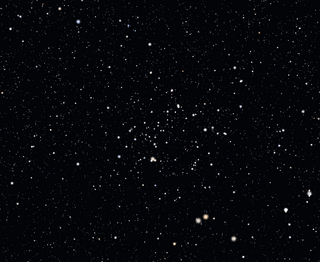
NGC 752 is an open cluster in the constellation Andromeda. The cluster was discovered by Caroline Herschel in 1783 and cataloged by her brother William Herschel in 1786, although an object that may have been NGC 752 was described by Giovanni Batista Hodierna before 1654.
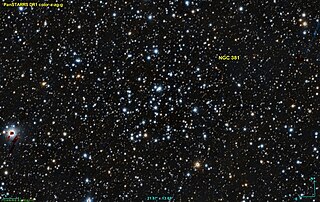
NGC 381 is an open cluster of stars in the northern constellation of Cassiopeia, located at a distance of approximately 3,120 light-years from the Sun. Credit for the discovery of this cluster was given to Caroline Herschel by her brother William in 1787, although she may never have actually seen it.

NGC 2360 is an open cluster in the constellation Canis Major. It was discovered on 26 February 1783 by Caroline Herschel, who described it as a "beautiful cluster of pretty compressed stars near 1/2 degree in diameter". Her notes were overlooked until her brother William included the cluster in his 1786 catalogue of 1000 clusters and nebulae and acknowledged her as the discoverer. The cluster lies 3.5 degrees east of Gamma Canis Majoris and less than one degree northwest of the eclipsing binary star R Canis Majoris; it has a combined apparent magnitude of 7.2. It is 13 arc minutes in diameter. By the western edge of the cluster is the unrelated star, 5.5-magnitude HD 56405.
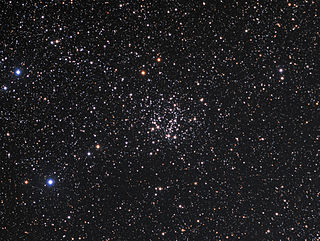
NGC 663 is a young open cluster in the constellation of Cassiopeia. It has an estimated 400 stars and spans about a quarter of a degree across the sky. It can reportedly be detected with the unaided eye, although a telescope is recommended for best viewing. The brightest members of the cluster can be viewed with binoculars. Although the listed visual magnitude is 7.1, several observers have reported higher estimates.
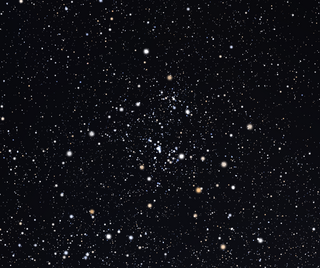
NGC 6755 is an open cluster of stars in the equatorial constellation of Aquila, positioned about 3° to the east of the star Delta Aquilae. It was discovered by the Anglo-German astronomer William Herschel on July 30, 1785 and is located at a distance of 8,060 light years from the Sun. NGC 6756 lies 30′ to the northeast of NGC 6755, with the pair forming a visual double cluster. However, they probably do not form a binary cluster system since they have different ages and are too distant from each other.
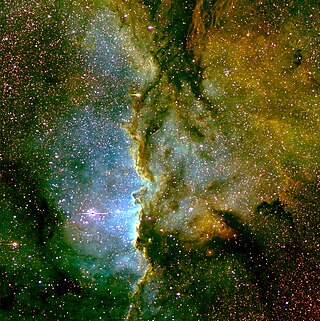
NGC 6193 is open cluster containing 27 stars in the constellation Ara, visible to the unaided eye. NGC 6193 lies at the center of the Ara OB1 association, which extends over a square degree. The cluster is associated with neighboring regions of the nebulosity NGC 6188.
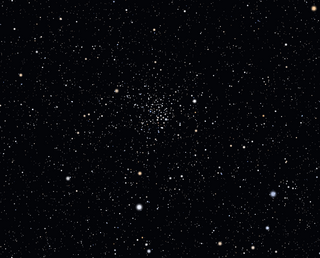
NGC 6939 is an open cluster in the constellation Cepheus. It was discovered by William Herschel in 1798. The cluster lies 2/3° northwest from the spiral galaxy NGC 6946. The cluster lies approximately 4,000 light years away and it is over a billion years old.

NGC 2539 is an open cluster in the constellation Puppis, located at the north edge of the constellation. It was discovered by William Herschel on January 31, 1785. It is a moderately rich cluster and with little central concentration, with Trumpler class II1m.

NGC 4349 is an open cluster in the constellation Crux. It was discovered by James Dunlop in 1826. It is located approximately 7,000 light years away from Earth.

NGC 4103 is an open cluster in the constellation Crux. It was discovered by James Dunlop in 1826. It is located approximately 5,000 light years away from Earth, in the Carina-Sagittarius arm.

NGC 4815 is an open cluster in the constellation Musca. It was discovered by John Herschel in 1834. It is located approximately 10,000 light years away from Earth.
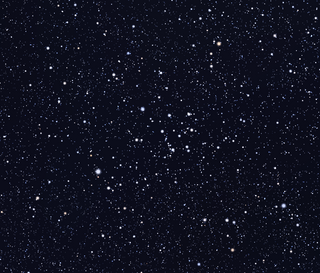
NGC 2527 is an open cluster in the constellation Puppis. It was discovered by William Herschel on December 9, 1784. The cluster was also observed by John Herschel on January 7, 1831. He also observed it on February 5, 1837, identifying it as a different object, which was catalogued as NGC 2520. It is a poor cluster and with no central concentration, with Trumpler class III1p.
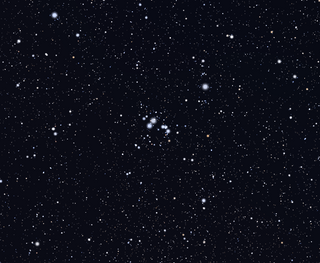
NGC 7160 is an open cluster in the constellation Cepheus. It was discovered by William Herschel on November 9, 1789. The cluster was also observed by John Herschel on October 7, 1829. It is a poor cluster and with little central concentration, with Trumpler class II3p. It is part of the stellar association Cepheus OB2, located one degree south-southwest of VV Cephei.
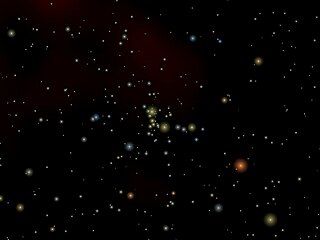
NGC 6910 is an open cluster in the constellation Cygnus. It was discovered by William Herschel on October 17, 1786. The cluster was also observed by John Herschel on September 18, 1828. It is a poor cluster with prominent central concentration and Trumpler class I2p. NGC 6910 is the core cluster of the stellar association Cygnus OB9.





















